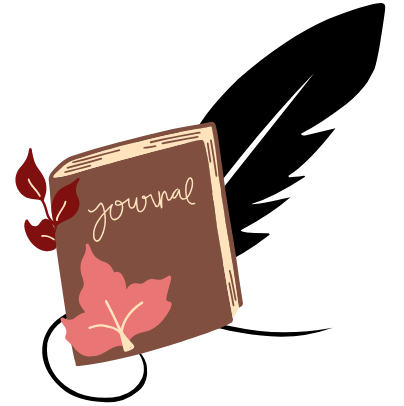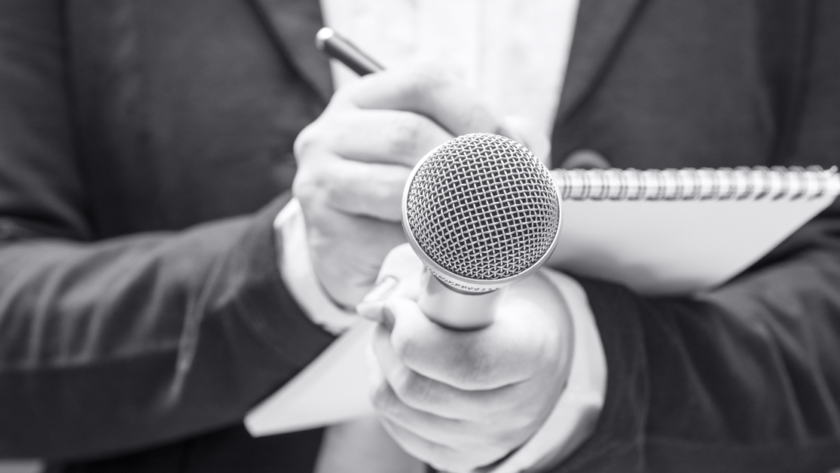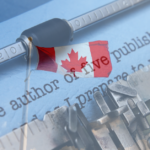The path from journalism to literary stardom has produced some of the most influential and celebrated writers in history.
Many beloved authors first honed their craft not in writing workshops or MFA programs, but in the fast-paced, high-pressure world of journalism.
The skills developed in newsrooms across the world have proven to be the perfect foundation for crafting compelling narratives that resonate with readers long after the last page is turned.
The Journalistic Foundation: Building Blocks of Literary Success
Journalism and creative writing share more common ground than you might think. The skills cultivated in the newsroom translate beautifully into fiction writing, allowing authors to create vivid, immersive worlds that feel real to the reader.
The Importance of Observation
As a journalist, I quickly learned that the key to a great story comes from the details. Capturing the essence of a moment, a person, or a place is crucial.
This keen eye for detail allows authors to paint vivid pictures with words, creating scenes that readers can easily visualize.
George Orwell’s experiences as a war correspondent during the Spanish Civil War directly informed his allegorical masterpiece, “Animal Farm.”
The political intrigues and power struggles he seen firsthand provided the raw material for his biting satire of totalitarianism.
Orwell’s journalistic background gave him the tools to observe and analyze complex social and political situations, which he then transformed into powerful fiction.
The Art of the Interview
One of the most valuable skills I picked up as a journalist was the art of the interview. Learning how to ask the right questions, listen actively, and draw out the most interesting aspects of a person’s story is invaluable when it comes to creating complex, believable characters in fiction.
Joan Didion, who began her career as a copywriter for Vogue, once said, “I write entirely to find out what I’m thinking, what I’m looking at, what I see and what it means.”
This journalistic approach to understanding the world and the people in it shines through in her incisive, observant prose. Didion’s ability to capture the essence of a person or a place in just a few well-chosen words is a testament to her journalistic training.
The Discipline of Deadlines
The constant drumbeat of deadlines in journalism instills a work ethic and discipline that serves authors well when facing the daunting task of completing a novel or memoir.
Meeting daily or weekly deadlines trains writers to produce consistently, even when inspiration is lacking.
Tom Wolfe, who worked for the Washington Post and New York Herald Tribune before penning novels like “The Bonfire of the Vanities,” credited his journalistic background with giving him the stamina to tackle long-form writing projects. “I couldn’t imagine writing a novel without having been a reporter,” he once said.
Wolfe’s ability to produce lengthy, detailed works of both non-fiction and fiction was undoubtedly honed during his years in the newsroom.
From Fact to Fiction: Navigating the Transition
While the skills learned in journalism provide a solid foundation for literary success, the transition from reporting to creative writing isn’t always smooth sailing.
Many journalists-turned-authors have spoken about the challenges of shifting from goal reporting to creating fictional worlds and characters.
Finding Your Voice
One of the biggest hurdles for many journalists making the leap to fiction is finding their own unique voice.
After years of adhering to the inverted pyramid and the “who, what, where, when, why” structure of news writing, the freedom of fiction can be both liberating and daunting.
Gabriel García Márquez, who worked as a journalist for several Colombian and international newspapers, found that his reporting experiences in Latin America directly informed his magical realist fiction. He once said, “I learned a lot from journalism, but I had to forget a lot of it to write fiction.”
Márquez’s ability to blend the real and the fantastical in his novels was rooted in his experiences as a journalist, where he seen the often surreal nature of life in Latin America.
Embracing Creativity
For many journalists, the transition to fiction writing requires a mental shift from reporting facts to creating entire worlds from scratch. It’s a process that can be both exhilarating and terrifying.
The challenge comes from learning to trust your imagination and to let go of the strict adherence to facts that journalism demands.
Hunter S. Thompson’s gonzo journalism, characterized by it’s highly subjective and often satirical approach, served as a bridge between traditional reporting and creative writing.
His influential work, “Fear and Loathing in Las Vegas,” began as an assignment for Sports Illustrated before evolving into a highly valuable novel that defied categorization.
Thompson’s unique style blended fact and fiction, personal experience and social commentary, paving the way for a new kind of literary journalism.
The New Journalism: Blurring the Lines
The 1960s and 1970s saw the rise of the New Journalism movement, which brought a new level of creativity and subjectivity to journalism that would later influence their work as authors.
This movement, pioneered by writers like Tom Wolfe, Gay Talese, and Norman Mailer, introduced literary techniques to non-fiction writing, creating a new form of storytelling that was both true and creatively engaging.
Narrative Techniques in Non-Fiction
New Journalism introduced literary devices like scene-setting, dialogue, and character development to non-fiction writing.
These techniques allowed journalists to create more immersive, engaging stories that read like novels while still adhering to the facts.
Truman Capote’s “In Cold Blood,” often cited as one of the first examples of the “non-fiction novel,” demonstrated how journalistic research could be combined with novelistic storytelling to create a new form of literature.
Capote spent years researching the brutal murder of the Clutter family in Kansas, conducting extensive interviews and gathering detailed information.
He then used this material to craft a narrative that read like a novel, finish with vivid descriptions, dialogue, and insight into the characters’ thoughts and motivations.
The Birth of Creative Non-Fiction
The New Journalism movement paved the way for the rise of creative non-fiction, a genre that continues to flourish today.
Authors like Joan Didion, John McPhee, and Susan Orlean have built successful careers straddling the line between journalism and literature, producing works that are both factually accurate and creatively engaging.
Creative non-fiction allows writers to use the techniques of fiction to tell true stories. This genre has given rise to powerful memoirs, immersive travelogues, and in-depth explorations of complex topics.
The journalistic skills of research, interviewing, and fact-checking mix with the literary skills of narrative structure, character development, and evocative prose to create compelling works that tell and entertain.
The Impact on Literature: A Legacy of Journalistic Influence
The influence of journalism on literature extends far beyond person authors’ careers. The journalistic emphasis on clarity, concision, and true accuracy has had a lasting impact on literary styles and genres.
The Rise of Narrative Non-Fiction
The skills honed in journalism have led to the creation of powerful works of non-fiction that tackle social and political issues with the narrative drive of a novel.
Books like Upton Sinclair’s “The Jungle,” which exposed the harsh conditions in the American meatpacking industry, show how journalistic instincts can fuel impactful literature.
Sinclair’s work, while fictionalized, was based on extensive research and firsthand observation. His ability to mix hard-hitting investigative journalism with compelling storytelling resulted in a book that entertained readers and sparked real-world change, leading to reforms in the food industry.
Investigative Fiction
Many journalists-turned-authors have used their investigative skills to create compelling works of fiction that shine a light on real-world issues.
John Grisham, a former lawyer and journalist, has built a career writing legal thrillers that often explore contemporary social and political themes.
Grisham’s background in both law and journalism gives his novels a sense of authenticity and relevance. His ability to research complex legal issues and translate them into gripping narratives has made him one of the bestselling authors of our time.
Grisham’s work shows how the skills of a journalist – thorough research, attention to detail, and the ability to explain complex topics clearly – can be applied to fiction writing to create stories that are both entertaining and informative.
The Digital Age: New Pathways from Journalism to Literature
In the digital age, the line between journalism and authorship continues to blur. Blogs, long-form articles, and multimedia storytelling have created new pathways for journalists to transition into book-length works.
The Importance of the Platform
Many journalists are now using their online platforms as launching pads for their literary careers.
Authors like Malcolm Gladwell and Michael Lewis have successfully straddled the worlds of journalism and literature, producing bestselling books that mix in-depth reporting with compelling storytelling.
Gladwell, who began his career at The Washington Post and later moved to The New Yorker, has become known for his ability to take complex scientific and sociological concepts and make them accessible to a general audience.
His books, such as “The Tipping Point” and “Outliers,” blend journalistic research with engaging narratives, creating a new genre of popular social science literature.
Lewis, a former bond salesman turned financial journalist, has used his insider knowledge and investigative skills to write bestselling books like “Liar’s Poker” and “The Big Short.”
His ability to explain complex financial concepts through compelling characters and narratives has made him one of the most respected authors in business literature.
The Podcast Revolution
The rise of true crime podcasts and investigative series has opened new doors for journalists to explore long-form narratives that often lead to book deals.
This trend highlights the ongoing symbiosis between journalism and literature in the modern media landscape.
Sarah Koenig’s “Serial” podcast, which investigated a real-life murder case, became a cultural phenomenon and sparked a renewed interest in long-form audio journalism.
The success of “Serial” and similar podcasts has led to a boom in narrative non-fiction books based on podcast investigations.
Similarly, journalists like Ronan Farrow have used podcast series as a way to expand on their investigative reporting.
Farrow’s podcast “Catch and Kill,” based on his Pulitzer Prize-winning reporting on Harvey Weinstein, led to a bestselling book of the same name.
This multi-platform approach allows journalists to reach wider audiences and explore their stories in greater depth than traditional news articles allow.
Exercises for Aspiring Authors
If you’re a journalist looking to make the leap into creative writing, or simply someone interested in honing your storytelling skills, try these exercises:
- News to Fiction: Take a news article you’ve written and rewrite it as a short story.
Focus on adding sensory details, creating a narrative arc, and developing the characters involved. This exercise helps you practice transforming true information into a more engaging, story-driven format.
- Character Creation: Interview someone interesting and use their story as the basis for a fictional character.
Pay attention to their mannerisms, speech patterns, and unique experiences.
Then, write a short story or character sketch that brings this person to life on the page, blending real details with fictional elements.
- Metaphor Practice: Choose a complex topic you’ve reported on and try explaining it using metaphors and analogies.
This exercise helps you develop the skill of making difficult concepts accessible to a general audience, a valuable tool in both journalism and creative writing.
- Personal Essay: Write a personal essay about an experience you’ve had as a journalist, focusing on your emotions and internal journey.
This exercise helps you practice injecting personal perspective and emotion into your writing, a key skill for many forms of creative non-fiction.
- Scene Setting: Take a location you’ve described in a news article and rewrite the description as if it were the opening of a novel.
Focus on creating atmosphere and mood through your choice of details and language.
This exercise helps you practice the art of immersive description.
- Dialogue Practice: Take a quote from an interview you’ve conducted and expand it into a full conversation.
Imagine what led up to the quote and what followed it.
This exercise helps you practice writing realistic, engaging dialogue.
- Story Structure: Take a long-form article you’ve written and break it down into a traditional story structure (exposition, rising action, climax, falling action, resolution).
Then, try rewriting the article as a short story following this structure.
This exercise helps you practice crafting compelling narrative arcs.
Key Takeaways
- Many successful authors began their careers in journalism, honing skills that proved invaluable in their literary work.
- The transition from journalism to fiction writing can be challenging but rewarding, requiring a shift in mindset and approach.
- The New Journalism movement of the 1960s and 70s blurred the lines between journalism and literature, paving the way for new forms of storytelling.
- Journalistic skills like observation, interviewing, and meeting deadlines are highly valuable in creative writing.
- The digital age has created new opportunities for journalists to transition into book-length works and build literary careers.
Frequently Asked Questions
How does journalism help with writing fiction?
Journalism provides valuable skills for fiction writing, including keen observation, effective interviewing techniques, and the ability to meet deadlines. These skills help authors create vivid settings, develop realistic characters, and maintain a consistent writing practice.
Can journalists become successful novelists?
Many successful novelists started their careers as journalists. Examples include Ernest Hemingway, George Orwell, and Joan Didion.
The transition from journalism to fiction writing is common and often successful because of the transferable skills involved.
What is New Journalism?
New Journalism is a style of reporting and writing that emerged in the 1960s and 1970s. It incorporates literary techniques into non-fiction writing, blending true reporting with narrative storytelling methods typically found in fiction.
Who are some famous authors who were journalists first?
Some well-known authors who began their careers as journalists include Mark Twain, Charles Dickens, Ernest Hemingway, George Orwell, Joan Didion, and Gabriel García Márquez.
How does journalistic writing differ from creative writing?
Journalistic writing typically focuses on reporting facts objectively and concisely, while creative writing allows for more imagination, emotion, and personal interpretation. However, both forms of writing need clear communication and engaging storytelling.
What is creative non-fiction?
Creative non-fiction is a genre that uses literary styles and techniques to create factually accurate narratives. It combines the research and reporting methods of journalism with the storytelling techniques of fiction.
How has digital media affected the transition from journalism to authorship?
Digital media has created new opportunities for journalists to build platforms, reach wider audiences, and experiment with long-form storytelling. Blogs, podcasts, and online magazines have become stepping stones for many journalists transitioning into book-length works.
What skills from journalism are most useful in novel writing?
Key journalistic skills that benefit novel writing include research abilities, interviewing techniques, attention to detail, meeting deadlines, and the ability to structure complex information into compelling narratives.
How long does it typically take to transition from journalism to fiction writing?
The transition time varies greatly depending on the person. Some journalists may write fiction on the side for years before publishing, while others may make a quick transition.
There’s no set timeline, and many authors continue to work in both fields simultaneously.
Are there any downsides to transitioning from journalism to fiction writing?
Potential challenges include adapting to a different writing style, dealing with the lack of immediate deadlines, and navigating the publishing industry. However, many find the creative freedom of fiction writing to be a rewarding change from journalistic constraints.




